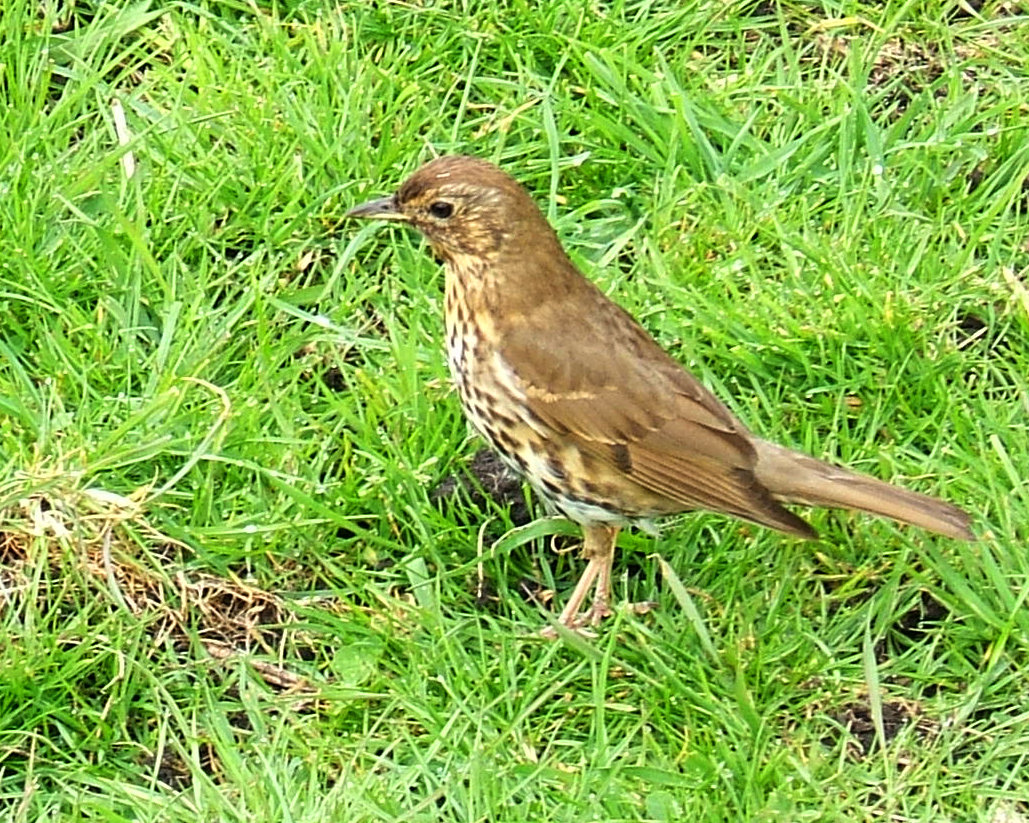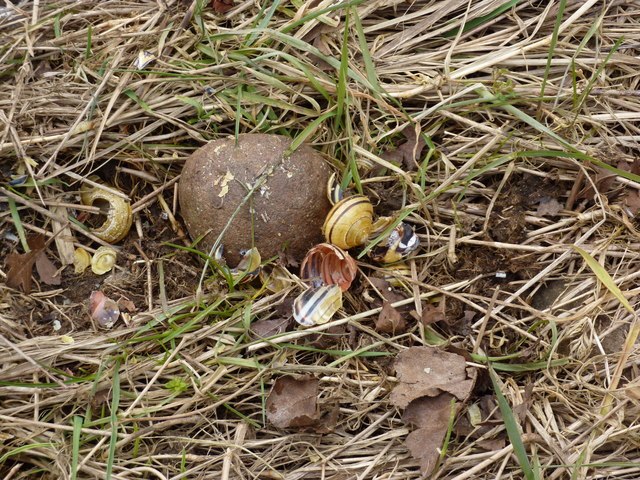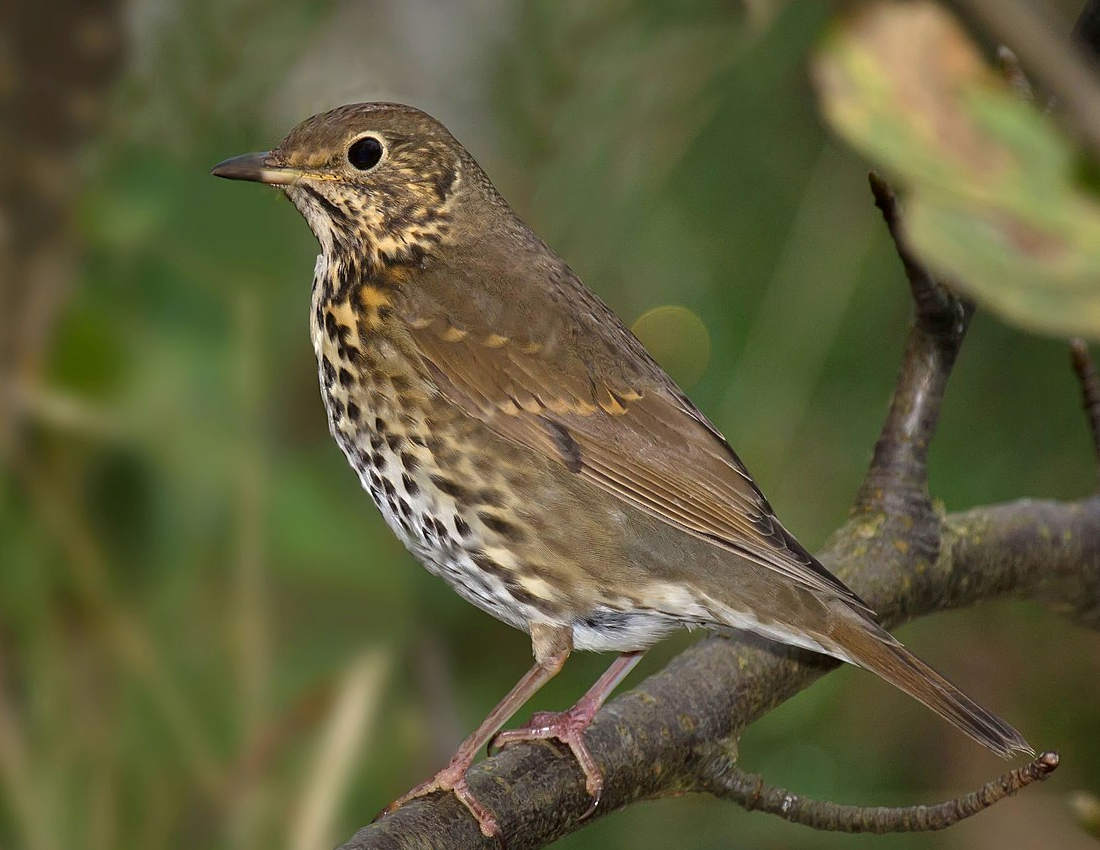Garden Wildlife
Garden Wildlife


Song thrush Turdus philomelos
Once a common and much loved garden bird, it has declined drastically of late
What do they look like?
Song thrushes are medium sized birds slightly smaller than blackbirds. They have a brown back and a white breast with very obvious black patches shaped like arrow heads in lines. There is a white ring around their eye which makes them look very alert. Juveniles are similar, but with light buff coloured breast. See our thrushes page to compare with other species.
What do they sound like?
Song thrushes are renowned for their liquid singing, although the blackbird comes very close in quality. Their song is very distinctive in that they repeat every phrase several times, and they have a great variety of phrases often with sharp unmusical squawk interspersed.
Male bird song Male bird song Alarm call
What do they do?
Like other thrushes they are ground feeders, but less confident than blackbirds.
What do they eat?
Song thrushes like earthworms as do blackbirds, but they also eat underground larvae, and later in the year caterpillars and fruit. They don't generally come to bird tables or trays, but may take suet pellets scatterd on the ground. They also like eating snails, and they smash the shells on chosen "anvils", easily spotted from the broken shells lying around.

Jacobo Ramil MIllarengo, XC697020. Accessible at www.xeno-canto.org/697020.
Alarm call
Irish Wildlife Sounds, XC692800. Accessible at www.xeno-canto.org/692800.
W. Agster, XC685428. Accessible at www.xeno-canto.org/685428

How are they doing?
Not very well, their numbers dropped after 1940 and have further halved since 1966. They were classed in the Red (at danger) list but are now up to Amber, because there has been some improvement since 1996. The decline has been much more marked in England than in other parts of the country, and populations are stable in Europe as a whole. There were estimated to have been 1.3 million territories in the UK in 2016. They are now seen in less than 10% of gardens, more commonly in rural than urban gardens, and doing best in deciduous woodland.
Finding out more
BTO profile on song thrush
RSPB profile on song thrush
Page written and compiled by Steve Head
Song thrush anvil stone with broken shells of the brown-lipped banded snail, Cepaea nemoralis.
Song thrush Turdus philomelos
Once a common and much loved garden bird, it has declined drastically of late.

What do they look like?
Song thrushes are medium sized birds slightly smaller than blackbirds. They have a brown back and a white breast with very obvious black patches shaped like arrow heads in lines. There is a white ring around their eye which makes them look very alert. Juveniles are similar, but with light buff coloured breast. See our thrushes page to compare with other species.
What do they sound like?
Song thrushes are renowned for their liquid singing, although the blackbird comes very close in quality. Their song is very distinctive in that they repeat every phrase several times, and they have a great variety of phrases often with sharp unmusical squawk interspersed.
Male bird song Male bird song
What do they do?
Like other thrushes they are ground feeders, but less confident than blackbirds.
What do they eat?
Song thrushes like earthworms as do blackbirds, but they also eat underground larvae, and later in the year caterpillars and fruit. They don't generally come to bird tables or trays, but may take suet pellets scatterd on the ground. They also like eating snails, and they smash the shells on chosen "anvils", easily spotted from the broken shells lying around.
Jacobo Ramil MIllarengo, XC697020. Accessible at www.xeno-canto.org/697020.

Song thrush anvil stone with broken shells of the brown-lipped banded snail, Cepaea nemoralis.
How are they doing?
Not very well, their numbers dropped after 1940 and have further halved since 1966. They were classed in the Red (at danger) list but are now up to Amber, because there has been some improvement since 1996. The decline has been much more marked in England than in other parts of the country, and populations are stable in Europe as a whole. There were estimated to have been 1.3 million territories in the UK in 2016. They are now seen in less than 10% of gardens, more commonly in rural than urban gardens, and doing best in deciduous woodland.
Finding out more
Page written and compiled by Steve Head

























